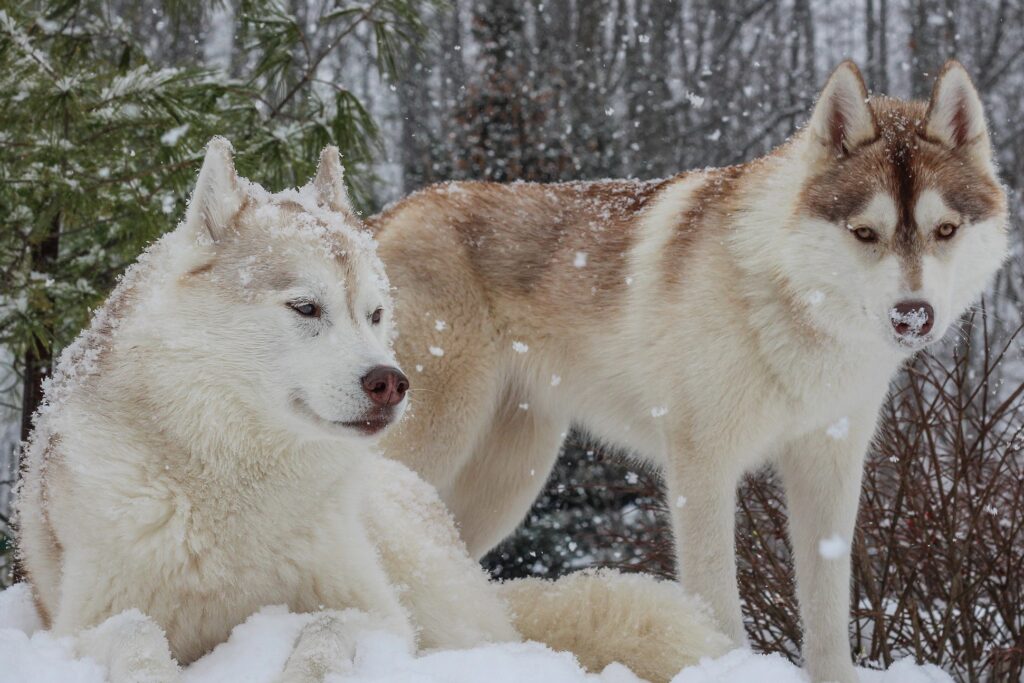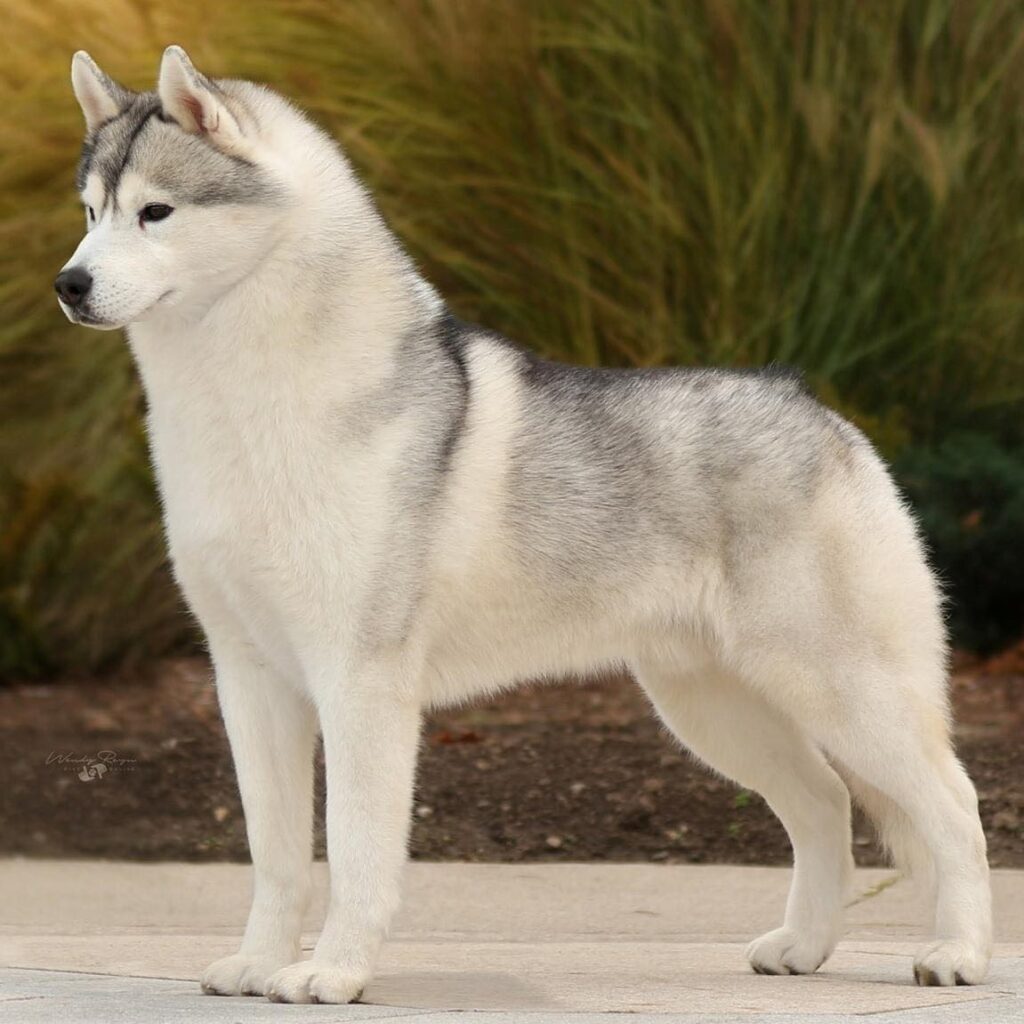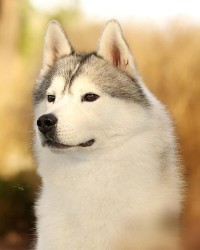Origin & Purpose: The Siberian Husky was developed untold centuries ago by the Chukchis of Northern Siberia. The Chukchis, a nomadic people, utilized their dogs in many ways – companions for their children, hunters for their food, and as their mode of transportation. Siberian Huskies were brought to Alaska in 1909 for racing, proving themselves to be hardy dogs with speed and endurance. It is essential that the breed purpose be retained today.
General Appearance: The Siberian Husky is a medium-sized working dog, light on his feet, free and graceful in action. He has an inbred desire to run and an independent spirit. His well-furred body, erect ears, and brush tail suggest his northern heritage. He performs his original function in harness most capably, carrying a light load at moderate speed over great distances. His body proportions and form reflect this basic balance of power, speed, endurance and general athletic abilities.
Height/Weight : Height – male 21 – 23-1/2 inches (53-60 cm) female 20 – 22 inches (51-56 cm) Weight – male: 45 – 60 lbs. (20-27 kg) female: 34 – 50 lbs. (15-23 kg).
Coat and Colour: The Siberian Husky has a thick, double-coat consisting of a soft, dense, downy undercoat next to the skin, and an outer coat of smooth guard hairs, giving a smooth, full-furred appearance and a clean-cut outline. It should be noted that the absence of undercoat during the shedding season is normal. General coat care consists of daily light brushing. Siberians tend to shed their coats twice a year. During the shedding season, or coat blowing, more frequent brushing is required to assist in removing the shedding undercoat. A slicker brush, an undercoat rake, and a high velocity canine dog dryer are essential to assist in this process. A FurminatorTM or bladed grooming tool should never be used on a Siberian Husky as it will cut the coat. Siberian Huskies, in general, do not have an odour so baths are recommended on an as-needed basis. All colours (solids and blended shades) and pure white are allowed and all markings. A large variety of markings are found in the Siberian Husky, especially around the head. Two patterns NOT found in the Siberian Husky are merle and brindle.
Feeding: Always ask your breeder what food they feed and recommend. If that food is not readily available where you live try and find out what is the closest thing to it. It is critical to not introduce a new kind of food and a change of water to your new puppy. Typically, a high-quality balanced kibble will ensure your Siberian Husky has a balanced diet. The water your new puppy drinks is also a consideration. Either bring a large container to fill with water from your breeder’s house or buy some bottled water for the first 2 weeks and slowly add your own tap water over that time. Puppies have immature digestive systems that are easy to upset.
Temperament: The typical Siberian Husky is friendly and gentle, but also alert and energetic. Adult Siberians can be more aloof and independent but never fear they love their cuddles and couch time too. His intelligence, natural workability and eager disposition make him a delightful companion and willing worker, especially as a sled dog. He should never display the possessive qualities of a guard dog. Predatory instincts in the Siberian Husky are very strong. While the Siberian is normally gentle and friendly with people and other dogs, owners MUST be aware that small animals in and around the home may become potential victims.
Training/Obedience: Early and consistent training is a must for this breed, the Siberian Husky is strong willed, independent, and stubborn. They should NEVER be off leash unless they are in a completely fenced yard. Crate training is essential. Positive reinforcement and reward-based training methods must also be paired with the understanding that a Siberian Husky will always ask “what’s in it for me?”.

Activity and Performance: The Siberian Husky is considered a high energy breed and requires an active lifestyle. Long walks and safe places to run are a must. As a working dog, this dog was bred to pull a sled and needs a similar job to perform. Recreational mushing, skijoring, bike-joring, and cani-cross are all activities the Siberian Husky enjoys with enthusiasm. Please contact local clubs to learn more about doing these sports safely.


